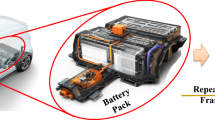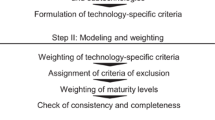Abstract
The changes in the automotive market and their effects on industry are nowadays hot topics in metal forming seminars and conferences around the world. The rise in the number of electric vehicles will inevitably lead to a decrease in the demand of components for combustion engines and power drive trains. Typical forming components such as pistons, connecting rods, valves, camshafts, crankshafts, multi-speed gear boxes and others that exist in diesel or petrol vehicles, will no longer be required. However, the lightweight construction requirements for the body-in-white of electric vehicles, the production of components for asynchronous motors and the fabrication of battery components, namely busbars, are bringing new challenges and opportunities for the metal forming industry. This chapter is focused on busbars, which are metallic strips or sheets that are utilized to distribute electric power to multiple equipment such as the electric motor, the electric power steering unit, and the AC/DC converters. In particular, the chapter addresses the challenge of replacing copper busbars by hybrid busbars made from copper and aluminium, due to the expected savings in weight and cost. For this purpose, the authors discuss the challenge of connecting copper to aluminium in hybrid busbars by means of existing joining technologies and introduce a new joining by forming process aimed at connecting hybrid busbars at room temperature without giving rise to material protrusions above and below the sheet surfaces. The effectiveness of the new process is compared against fastening by measuring the electric resistivities in both types of hybrid busbar joints. Finite element analysis gives support to the presentation and proves to be suitable for the electro-thermo-mechanical analysis of busbar connections.
Access this chapter
Tax calculation will be finalised at checkout
Purchases are for personal use only
Similar content being viewed by others
References
Grauers A, Sarasini S, Karlström M (2017) Why electromobility and what is it. In: Sandén B, Wallgren P (eds) Systems perspectives on electromobility. Chalmers University of Technology, Gothenburg
Barbier EB (2020) Building a greener recovery: lessons from the great recession. United Nations Environment Programme, Geneva
Santos DMF, Sequeira CAC, Figueiredo JL (2013) Hydrogen production by alkaline water electrolysis. Quim Nova 36:1176–1193. https://doi.org/10.1590/S0100-40422013000800017
Ursúa A, Gandía LM, Sanchis P (2012) Hydrogen production from water electrolysis: current status and future trends. Proc IEEE 100(2):410–426
Agrawal KC (2007) Carrying power through metal-enclosed bus systems. In: Electrical power engineering reference and applications handbook. CRC Press, Boca Raton
Siemens AG (2013) Gas-insulated switchgear up to 550 KV, 63 KA, 5000 A type 8DQ1, Erlangen. https://www.siemens-energy.com/global/en/offerings/power-transmission/transmission-products/gas-insulated.html. Accessed on Feb 11, 2021
Chapman D, Norris T (2014) Copper for busbars: guidance for design and installation. Copper Development Association, Hemel Hempstead
Kim M-J, Bak S-H, Jung W-C, Hur D-J, Ko D-S, Kong M-S (2019) Improvement of heat dissipation characteristics of Cu Bus-Bar in the switchboards through shape modification and surface treatment. Energies 12(1):146. https://doi.org/10.3390/en12010146
Dion PA (1968) Metal cladding. US3616982A, United States Patent
Jehyeon B (1996) Method for manufacturing Bus-Bar Korean Patent KR970004548B1
Davis JR (ed) (2001) ASM specialty handbook—copper and copper alloys. ASM International, Materials Park, OH
ASM International (1990) ASM handbook volume 2: properties and selection: nonferrous alloys and special-purpose materials. ASM International, Materials Park, Ohio
Groover MP (2010) Fundamentals of modern manufacturing: materials, processes, and systems. Wiley, Hoboken, NJ
Melsom SW, Booth HC (1922) The efficiency of overlapping joints in copper and aluminium busbar conductors. J Inst Electr Eng 60(312):889–899.https://doi.org/10.1049/jiee-1.1922.0068
Iclodean C, Varga B, Burnete N, Cimerdean D, Jurchiș B (2017) Comparison of different battery types for electric vehicles. In: CAR2017 international congress of automotive transport engineering—mobility engineering and environment, p 252
Zwicker MFR, Moghadam M, Zhang W, Nielsen CV (2020) Automotive battery pack manufacturing—a review of battery to tab joining. J Adv Joining Process 1:100017. https://doi.org/10.1016/j.jajp.2020.100017
Gallagher KG, Nelson PA (2014) Manufacturing costs of batteries for electric vehicles. In: Pistoia G (ed) Lithium-ion batteries: advances and applications. Elsevier, Amsterdam
Accelonix (2021) Introduction to wire bonding in production of battery packs. https://accelonix.co.uk/index.php/microelectronics/fully-automatic-wire-bonder/wire-bonding-in-production-of-battery-packs. Accessed on May 12, 2021
Gabzdyl J, Dzurko K, SPI Lasers UK LTD (2019) E-mobility offers multiple opportunities for fiber lasers. https://www.spilasers.com/case-study-e-mobility/e-mobility-offers-multiple-opportunities-for-fiber-lasers/. Accessed on May 12, 2021
AUDI AG (2021) Audi e-tron Sportback 55 quattro. https://www.audi-mediacenter.com/en/search?query=batterie%20etron&type=image&utf8=%E2%9C%93. Accessed on May 12, 2021
EV Battery Center (2014) 2kWh Lithium Battery Pack Chevrolet Volt—47V/47Ah/12 cells. https://evbatterycenter.com/HAC4/index.php?option=com_hikashop&ctrl=product&task=show&cid=79&name=2kw-h-lithium-battery-pack-chevrolet-volt-45v-45ah-12-cells&Itemid=605. Accessed on May 12, 2021
Second life EV batteries Ltd (2021) BMW i3 |44V | 94Ah. https://www.secondlife-evbatteries.com/products/bmw-i3-module-samsung-sdi-94ah. Accessed on May 12, 2021
Saariluoma H, Piiroinen A, Unt A, Hakanen J, Rautava T, Salminen A (2020) Overview of optical digital measuring challenges and technologies in laser welded components in EV battery module design and manufacturing. Batteries 6:47. https://doi.org/10.3390/batteries6030047
Ferreira F (2020) Dissimilar metal joining through injection riveting, MSc. Dissertation, Instituto Superior Técnico, University of Lisbon
Porsche AG (2019) The Porsche Taycan. https://e-performance.io/en/taycan-technology. Accessed on Feb 20, 2021
Brand MJ, Philipp AS, Michael FZ, and Andreas J (2015) Welding techniques for battery cells and resulting electrical contact resistances. J Energ Storage 1:7–14. https://doi.org/10.1016/j.est.2015.04.001
Fleckenstein M, Bohlen O, Roscher MA, Bäker B (2011) Current density and state of charge inhomogeneities in Li-ion battery cells with LiFePO4as cathode material due to temperature gradients. J Power Sour 196(10):4769–4778. https://doi.org/10.1016/j.jpowsour.2011.01.043
Kaspar J, Zimmermann M, Ostwaldt A, Goebel G, Standfuß J, Brenner B (2014) Challenges in joining aluminium with copper for applications in electro mobility. Mater Sci Forum 783–786:1747–1752. https://doi.org/10.4028/www.scientific.net/msf.783-786.1747
Das A, Li D, Williams D, Greenwood D (2018) Joining technologies for automotive battery manufacturing. World Electr Veh J 9.https://doi.org/10.3390/wevj9020022
Katayama S (2013) Introduction: fundamentals of laser welding. In: Katayama S (ed) Handbook of laser welding technologies. Woodhead Publishing, Cambridge
Mahamood RM (2017) Laser basics and laser material interactions. In: Mahamood RM (ed) Laser metal deposition process of metals, alloys, and composite materials. Springer, Cham, https://doi.org/10.1007/978-3-319-64985-6_2
Wang J, Katsumoto K, Nezu K (2004) Investigation into micro-tungsten inert gas arc behaviour and weld formation. Sci Technol Weld Join 9(1):90–94.https://doi.org/10.1179/136217104225017198
Alexy M, van de Wall D, Shannon G, Boyle ML (2019) Batteries need strong connections are resistance, laser and micro TIG welding the best suited joining technologies? Biuletyn Instytutu Spawalnictwa 1:53–63.https://doi.org/10.17729/ebis.2019.1/6
Oláfsson D, Vilaça P, Vesanko J (2020) Multiphysical characterization of FSW of aluminum electrical busbars with copper ends. Weld World 64:59–71. https://doi.org/10.1007/s40194-019-00814-0
Wu X, Shang J (2014) An investigation of magnetic pulse welding of Al/Cu and interface characterization. J Manuf Sci Eng 136:5. https://doi.org/10.1115/1.4027917
PST Products (2019) EMPT in the battery production. https://www.pstproducts.com/en/empt_battery_production.html. Accessed on Feb 15, 2021
Lee SS, Kim TH, Hu SJ, Cai W (2010) Joining technologies for automotive lithium-ion battery manufacturing: a review. In: ASME 2010 international manufacturing science and engineering conference, pp 541–549
Agrawal KC (2007) Recommended practices for mounting buses and making bus joints. In: Electrical power engineering reference and applications handbook. CRC Press, Boca Raton
Tzeneva R, Slavtchev Y, Mladenov V (2007) New connection design of high power bolted busbar connections. In: Proceedings of the 11th conference on proceedings of the 11th WSEAS international conference on circuits(ICC'07), vol 11, pp 228–233
Xing B, He X, Wang Y, Yang H, Deng C (2015) Study of mechanical properties for copper alloy H62 sheets joined by self-piercing riveting and clinching. J Mater Process Technol 216:28–36. https://doi.org/10.1016/j.jmatprotec.2014.08.030
Wang X, Li C, Ma Y, Shen Z, Sun X, Sha C, Gao S, Li L, Liu H (2016) An experimental study on micro clinching of metal foils with cutting by laser shock forming. Materials 9:7. https://doi.org/10.3390/ma9070571
Pragana JPM, Silva CMA, Bragança IMF, Alves LM, Martins PAF (2018) A new joining by forming process to produce lap joints in metal sheets. CIRP Ann 67(1):301–304. https://doi.org/10.1016/j.cirp.2018.04.121
Ferreira FR, Pragana JPM, Bragança IMF, Silva CMA, Martins PAF (2021) Injection lap riveting. CIRP Ann Manuf Technol (accepted for publication). https://doi.org/10.1016/j.cirp.2021.03.018
Nielsen CV, Zhang W, Alves LM, Bay N, Martins PAF (2013) Coupled finite element flow formulation. In: Davim P (ed) Modelling of thermo-electro-mechanical manufacturing processes with applications in metal forming and resistance welding. Springer, London. https://doi.org/10.1007/978-1-4471-4643-8_3
Nielsen CV, Martins PAF (2021) Finite element flow formulation In: Metal forming: formability, simulation and tool design. Academic Press, London. https://doi.org/10.1016/B978-0-323-85255-5.00008-X
Szallies K, Zwicker M, Bergmann JP (2020) Single-sided resistance spot welding of steel-aluminum dissimilar joints—mechanical characterization and interface formation. Adv Struct Mater 125.https://doi.org/10.1007/978-981-15-2957-3_6
Acknowledgements
The authors would like to acknowledge the support provided by Fundação para a Ciência e a Tecnologia and IDMEC under LAETA-UID/EMS/50022/2013 and PTDC/EME-EME/0949/2020. The work of MSc. Francisco Ferreira is also acknowledged.
Author information
Authors and Affiliations
Corresponding author
Editor information
Editors and Affiliations
Rights and permissions
Copyright information
© 2022 The Author(s), under exclusive license to Springer Nature Switzerland AG
About this chapter
Cite this chapter
Sampaio, R.F.V. et al. (2022). Busbars for e-mobility: State-of-the-Art Review and a New Joining by Forming Technology. In: Davim, J.P. (eds) Mechanical and Industrial Engineering. Materials Forming, Machining and Tribology. Springer, Cham. https://doi.org/10.1007/978-3-030-90487-6_4
Download citation
DOI: https://doi.org/10.1007/978-3-030-90487-6_4
Published:
Publisher Name: Springer, Cham
Print ISBN: 978-3-030-90486-9
Online ISBN: 978-3-030-90487-6
eBook Packages: EngineeringEngineering (R0)




